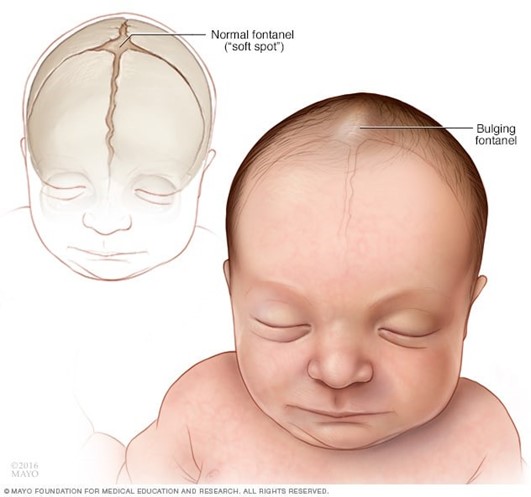A nurse is assessing a toddler who has suspected lead poisoning.
Which of the following findings should the nurse expect the client to manifest with acute lead poisoning?
Increased urinary output.
Anorexia.
Diarrhea.
Jaundice.
Jaundice.
The Correct Answer is B
Acute lead poisoning in toddlers can cause anorexia, as well as vomiting, abdominal pain, and constipation.
These symptoms can progress to seizures, coma, and even death if not treated promptly.
Choice A, increased urinary output, is not the correct answer because lead poisoning can cause a decrease in urinary output due to the effect of lead on the kidneys.
Choice C, diarrhea, is not the correct answer because lead poisoning is more likely to cause constipation than diarrhea.
Choice D, jaundice, is not the correct answer because jaundice is not a common finding in lead poisoning.
Jaundice is a yellowing of the skin and whites of the eyes caused by an excess of bilirubin in the blood, which is not directly related to lead poisoning.
Nursing Test Bank
Naxlex Comprehensive Predictor Exams
Related Questions
Correct Answer is B
Explanation
The correct answer is choiceb. Firmly attached white particles on the hair.
Choice A rationale:
Itching and scratching of the head are common symptoms of pediculosis capitis, but they are not definitive indicators. Itching can be caused by various other conditions such as dandruff or allergies.
Choice B rationale:
Firmly attached white particles on the hair, known as nits, are a definitive sign of pediculosis capitis.Nits are lice eggs that stick to the hair shafts and are difficult to remove.
Choice C rationale:
Thick yellow crusted lesions on a red base are more indicative of impetigo, a bacterial skin infection, rather than pediculosis capitis.
Choice D rationale:
Patchy areas of hair loss are typically associated with conditions like alopecia areata or fungal infections such as tinea capitis, not pediculosis capitis.
Correct Answer is C
Explanation
A bulging fontanel is a manifestation associated with a CNS infection in an 11- month-old infant.
A bulging fontanel can be a sign of increased intracranial pressure, which can
occur with meningitis or encephalitis, both of which are types of CNS infections.
Choice A is incorrect because oliguria, or decreased urine output, is not typically associated with a CNS infection.
Choice B is incorrect because jaundice, or yellowing of the skin and eyes, is not typically associated with a CNS infection.
Choice D is incorrect because a negative Brudzinski sign would indicate that there is no neck stiffness, which would be an unlikely finding in a CNS infection.

Whether you are a student looking to ace your exams or a practicing nurse seeking to enhance your expertise , our nursing education contents will empower you with the confidence and competence to make a difference in the lives of patients and become a respected leader in the healthcare field.
Visit Naxlex, invest in your future and unlock endless possibilities with our unparalleled nursing education contents today
Report Wrong Answer on the Current Question
Do you disagree with the answer? If yes, what is your expected answer? Explain.
Kindly be descriptive with the issue you are facing.
